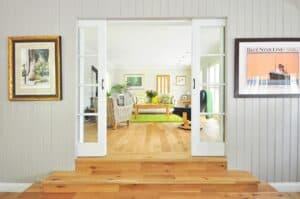Designing the Perfect Family Home: Essential Features and Practical Tips
Key Takeaways
- Discover the key features that define a perfect family home.
- Learn practical tips for designing a family-friendly environment.
- Recognize the significance of adaptability and practicality in a family residence.
Table of Contents
- Introduction to Family Home Design
- Prioritizing Open and Flexible Spaces
- Incorporating Safety and Accessibility
- Integrating Smart Home Technology
- Designing for Energy Efficiency
- Creating Outdoor Family Spaces
- The Role of Privacy in Family Homes
- Conclusion: Balancing Aesthetics and Practicality
Designing the ideal family home involves crafting a living space that balances comfort, safety, and aesthetic appeal. It’s where memories are made, and every stressful day ends with a sense of relief and belonging. Drawing inspiration from existing homes like those by Rockford Homes can guide you in this endeavor, illustrating how functionality and style can harmonize effortlessly in modern home designs. The process involves more than mere architectural prowess; it requires a genuine understanding of familial dynamics and how these can translate into interior and exterior spaces. This guide delves into various features that can elevate a simple house into a perfect family sanctuary when thoughtfully integrated.

Introduction to Family Home Design
In today’s world, the concept of a family home extends far beyond the traditional brick-and-mortar structure. It’s an evolving hub of personal and collective experiences tailored to cater to diverse activities ranging from dining to digital learning. A versatile home allows families to foster shared experiences while respecting the individuality of each member. Designing such a space calls for a delicate balance between architectural innovation and personal touch, ensuring that every corner of the home is functional yet personal.
Prioritizing Open and Flexible Spaces
An open floor plan is synonymous with modern family living, breaking barriers created by walls to promote effortless movement and conversation. The charm of open spaces lies in their ability to adapt — a feature indispensable in dynamic family environments. Imagine transforming a spacious dining area into a workspace during the day and a dinner party venue by evening. The flexibility of open spaces supports family events and everyday routines, rendering them timeless. Such spaces can effortlessly evolve with the family over the years, meeting changing needs without necessitating significant renovations.
Incorporating Safety and Accessibility
Safety in a home is non-negotiable, especially when children are involved. Simple measures like ensuring no sharp edges, installing safety locks on cabinets, and using slip-resistant flooring can drastically reduce household accidents. Furthermore, designing a home that anticipates the needs of elderly family members or those with disabilities breaks the accessibility barriers commonly faced. Features like wider corridors, lever-style door handles, or step-free entrances are not just considerate but essential, ensuring comfort and security for every visitor.
Integrating Smart Home Technology
Integrating intelligent technology into home design has introduced a new age of comfort and safety. There’s a gadget for every need, from smart thermostats that learn your schedule to adjust temperatures to automated lighting systems that enhance energy efficiency. The potential for a seamlessly connected home environment is endless. Smart security systems offer peace of mind, allowing homeowners to monitor their property remotely, while voice-controlled assistants can manage daily tasks, thus simplifying life significantly.
Designing for Energy Efficiency
As environmental consciousness grows, so does the emphasis on energy-efficient homes. Homeowners can dramatically cut energy consumption and costs by employing strategies like enhanced insulation, double-glazed windows, and energy star-rated appliances. These actions aid in creating a more sustainable planet and make the residents more self-reliant. Energy-efficient designs invest in the environment and the homeowner’s future, reducing utility bills and potentially increasing property value over time.
Creating Outdoor Family Spaces
Outdoor spaces extend the sanctuary of the home into nature, providing a canvas for creativity, relaxation, and ecological harmony. Whether it’s a lush garden, a deck for family barbecues, or a safe play area for kids, these spaces add immense value. A well-designed outdoor area seamlessly integrates with the interior, blurring boundaries and enhancing the feeling of openness. Furthermore, outdoor spaces encourage physical activity and connection with nature, fostering healthier lifestyles.
The Role of Privacy in Family Homes
While open spaces encourage togetherness, privacy sustains individuality and harmony within family units. As children grow, their need for private spaces becomes essential for personal development. Similarly, adults benefit from rooms— a home office or a tranquil reading nook—that provide a retreat from the daily hustle. Intelligent design incorporates such private zones without compromising on openness, ensuring that the home is a cohesive unit where individual needs and family interactions coexist without conflict.
Conclusion: Balancing Aesthetics and Practicality
In conclusion, the journey to designing the perfect family home is continuous and dynamic. It is about more than choosing the right furniture or paint color; it’s about understanding and anticipating your family’s ever-evolving needs. Each decision should contribute to crafting a space that epitomizes safe, sustainable, and joyous family living. By harmonizing practical needs with aesthetic desires, a family home can be more than just a building; it becomes a cherished companion and a witness to life’s beautiful moments over generations.

